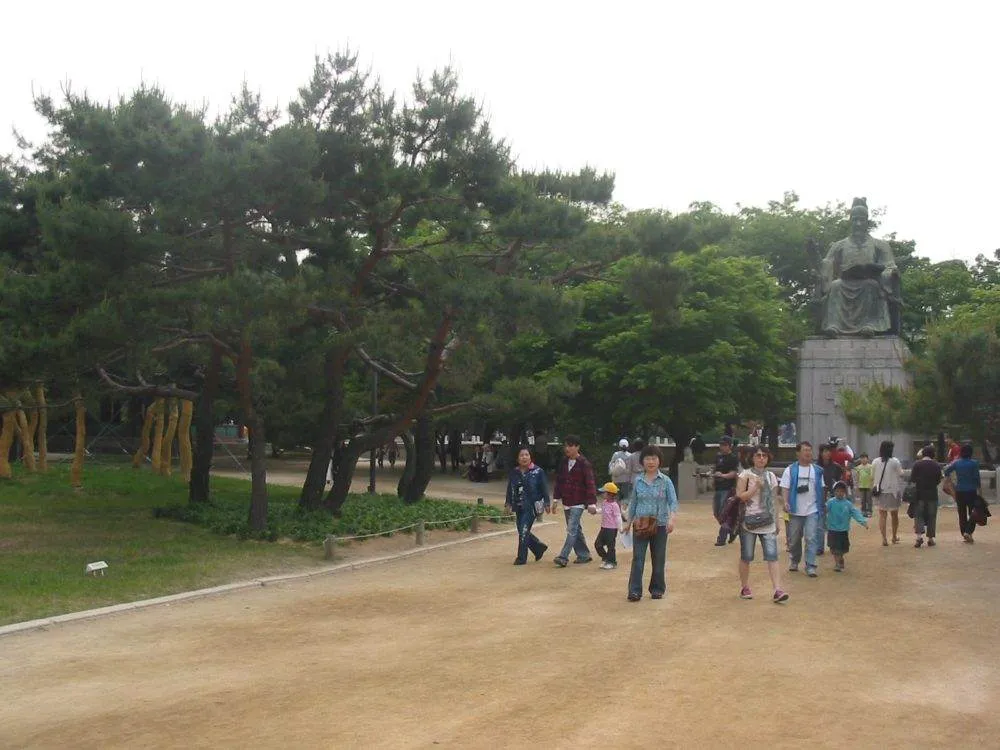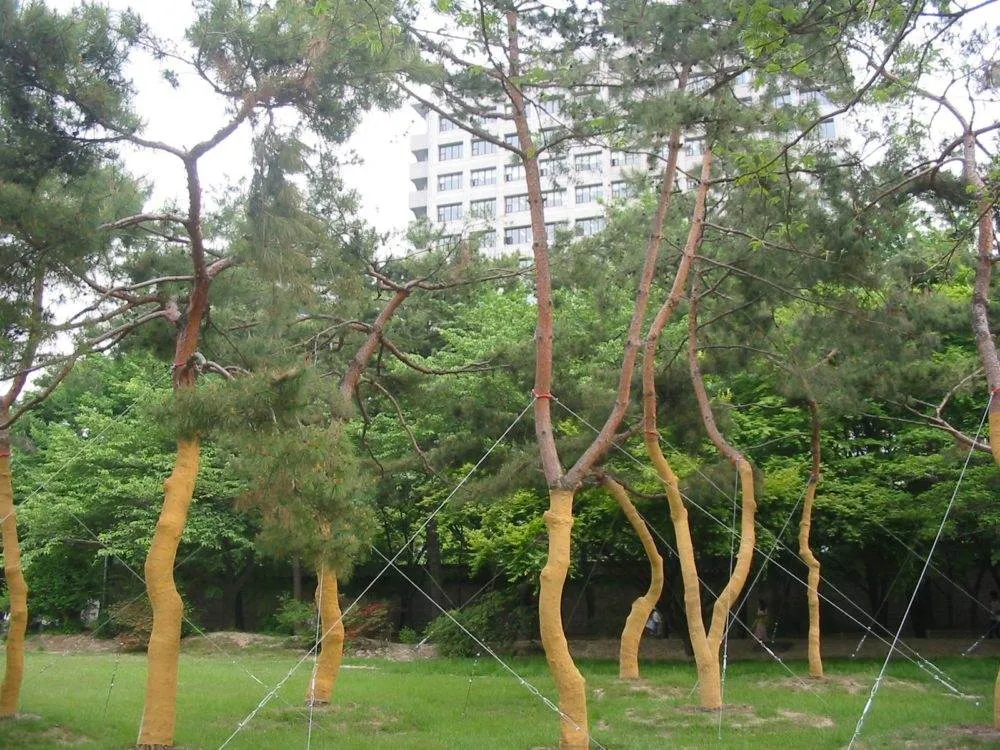
A 360 degree panaroma of Deoksugung Palace – click for the full pic (give it a second to load – it’s the result of about 12 individual pictures!)
At first, I got the words ‘palace’ and ‘temple’ confused quite easily. Now that I’ve been to one of each, it’s a lot easier to see the difference… At the risk of stating the obvious, palaces are those buildings / areas that were once considered the buildings or land of the nobility, while temples are those buildings / areas that are (or were) used by Buddhists. With that possibly obvious statement out of the way, I shall continue 🙂


Deoksugung Palace is another indication of the merging of old and new. It’s located across the street from City Hall in the heart of downtown, and within walking distance of some of the business districts and other high-rises in Seoul. Pay 1,000 won admission to the temple grounds (plus an additional 10,000 won for entrance to the special exhibits in the Deoksugun Art Museum – currently ‘the Art of Cartier’, running through July 13), then walk through the temple gates and emerge into a world that transports you into the past. Hear the birds, take in the fresh air, and imagine the modern skyscrapers are a million miles away (even though they look much closer).
Most palaces have a rich history, and this one is no exception. Deoksugung Palace was originally the home of King Seongjong’s elder brother, Prince Wolsan. After all the palaces in Hanyang (what is now Seoul) were burned down during the Japanese invasion of 1592, Deoksugung was used as a temporary palace. It was used as a royal palace for 7 years from 1608-1615, when then-Kind Gwanghaegun moved the royal palace to Changdeokgung (a right of the king, I suppose). Of more recent interest, Emperor Gojong returned to this palace in 1897, and continued to live in the palace even after he was no longer emperor. At that point the palace was called Deoksugung, which means ‘the Palace of Virtue and Longevity in the spirit of praying for a long life for Emperor Gojong’ (say that five times fast). While some of the buildings have been around for centuries, it’s worth noting that several of the buildings were rebuilt in the early 1900’s due to a fire (one reason why you’ll see fire extinguishers every 50 feet or so). OK, history lesson over – time for some pictures.


I walked along the dirt paths towards some of the historical trees (many of the trees here are several hundred years old, and are cared for or supported as an old artifact or painting might be in America or Europe). The trees have small signs with the species names in English, but everything else on the signs are in Korean. There’s also a wall describing the history of the palace, but it’s entirely in Korean.
Several traditional and open buildings display the vibrant colors characteristic of temples. Darker greens, yellows, and blues predominate, although the entire rainbow of colors is reprensated at one place or another. I found the most vibrant colors just underneath the roof:



How would you like THESE for your front doors?! OK, they were actually used as entrances to symbolic spaces for state ceremonies, but still… The previous picture shows some small stone markers that indicated where certain officials were supposed to stand during royal assemblies.
Admire the buildings and take photographs from the outside, but visitors are not allowed to venture inside the buildings. With some you can see inside (such as below), but with most the doors are closed, giving you a strong hint that you’re not to enter.

While the inside looks rather unremarkable, this is a two-story wooden house where King Seonjo (1567-1608) lived and passed away. Although burned down in 1904, it was rebuilt the same year.

On the whole, there are enough signs and maps indicating ‘you are here’ in English to make getting around easy, It’s also a wide-open area, so I didn’t have many problems getting around.

A cafeteria / souvenir shop built in one of the buildings on the palace grounds. Although it fits the scheme used throughout the palace, I can’t help but wonder if the various emperors or kings would be turning in their graves if they knew what their buildings were being used for today 🙂
If seeing a traditional palace is on your list of things to see in Seoul, you can’t go wrong by seeing one of the most convenient and easily-accessed ones in Seoul. That it’s cheap and easily seen in a couple of hours is nice as well. It’s not the most English-friendly place, but there’s more than enough to get around.


